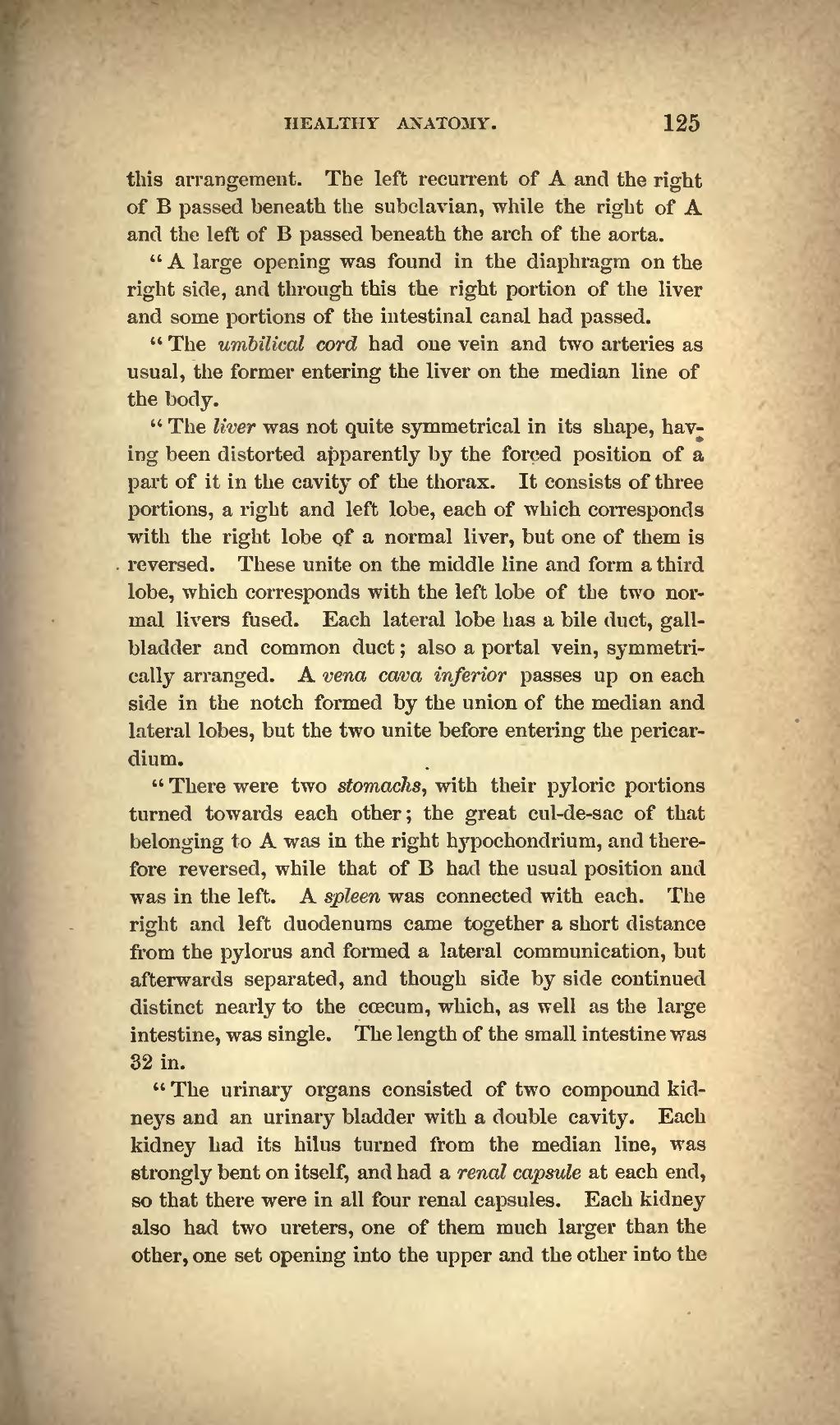this arrangement. The left recurrent of A and the right of B passed beneath the subclavian, while the right of A and the left of B passed beneath the arch of the aorta.
"A large opening was found in the diaphragm on the right side, and through this the right portion of the liver and some portions of the intestinal canal had passed.
"The umbilical cord had one vein and two arteries as usual, the former entering the liver on the median line of the body.
"The liver was not quite symmetrical in its shape, hav ing been distorted apparently by the forced position of a part of it in the cavity of the thorax. It consists of three portions, a right and left lobe, each of which corresponds with the right lobe of a normal liver, but one of them is reversed. These unite on the middle line and form a third lobe, which corresponds with the left lobe of the two nor mal livers fused. Each lateral lobe has a bile duct, gall bladder and common duct ; also a portal vein, symmetri cally arranged. A vena cava inferior passes up on each side in the notch formed by the union of the median and lateral lobes, but the two unite before entering the pericar dium.
"There were two stomachs, with their pyloric portions turned towards each other; the great cul-de-sac of that belonging to A was in the right hypochondrium, and there fore reversed, while that of B had the usual position and was in the left. A spleen was connected with each. The right and left duodenums came together a short distance from the pylorus and formed a lateral communication, but afterwards separated, and though side by side continued distinct nearly to the coecum, which, as well as the large intestine, was single. The length of the small intestine was 32 in.
"The urinary organs consisted of two compound kid neys and an urinary bladder with a double cavity. Each kidney had its hilus turned from the median line, was strongly bent on itself, and had a renal capsule at each end, so that there were in all four renal capsules. Each kidney also had two ureters, one of them much larger than the other, one set opening into the upper and the other into the
